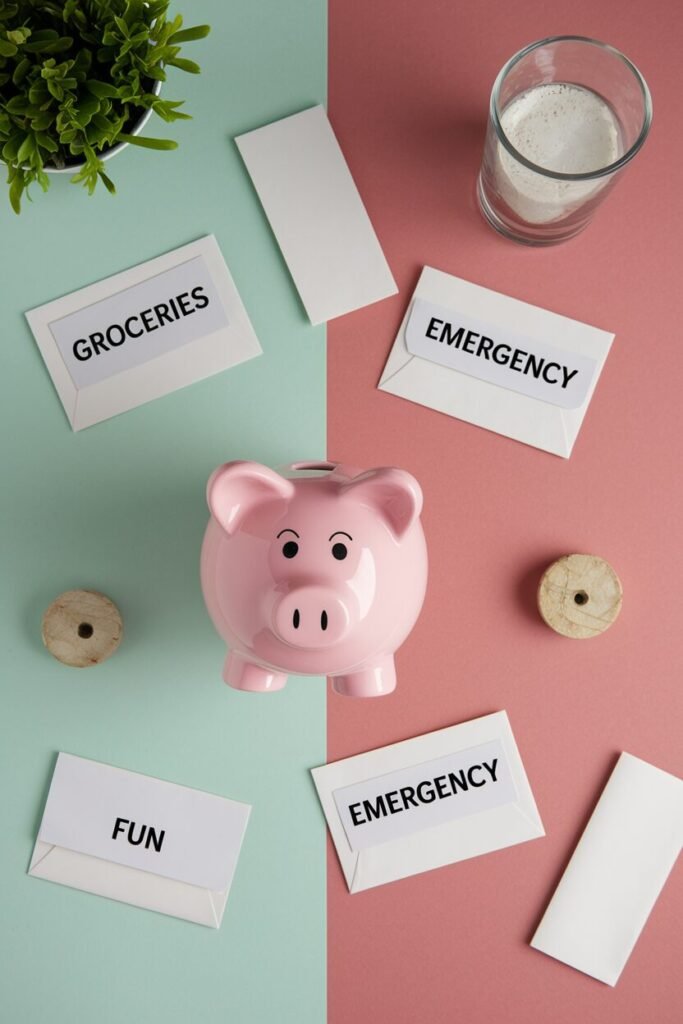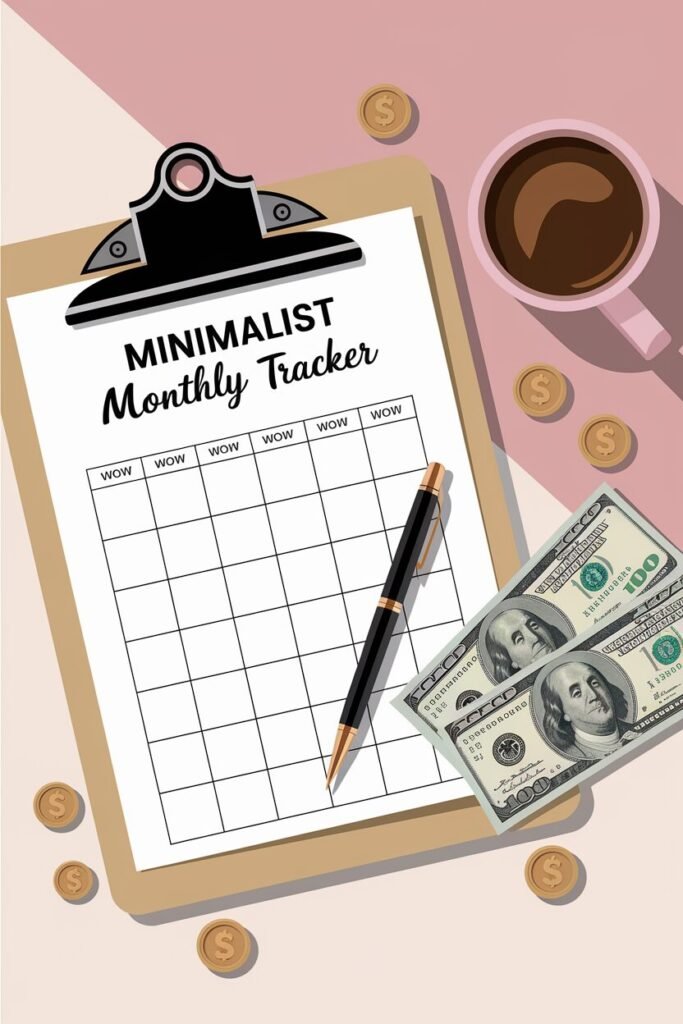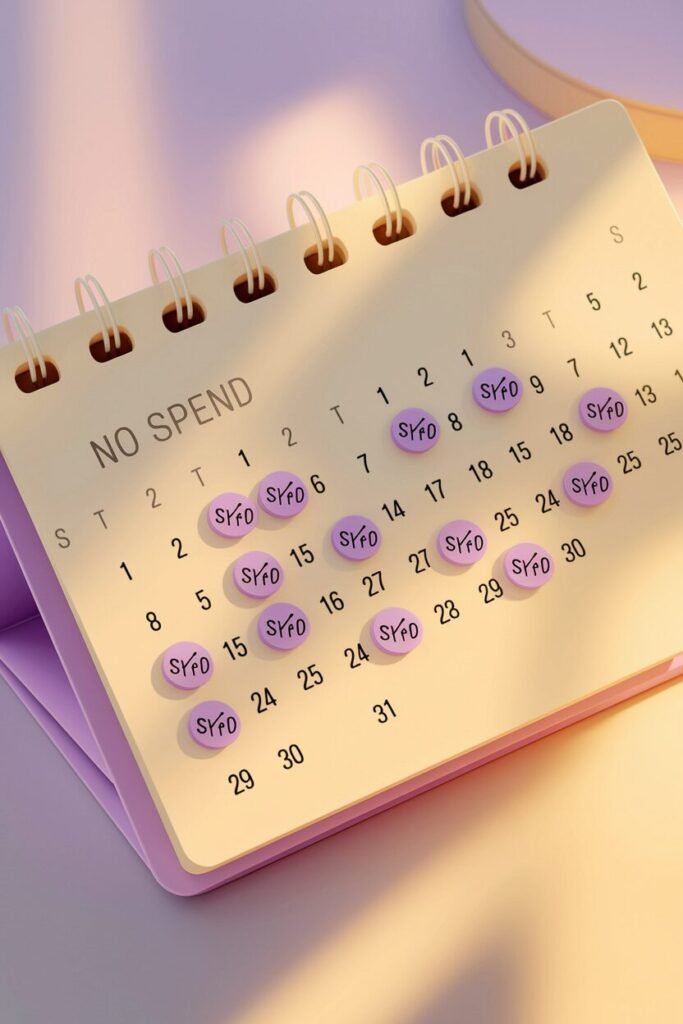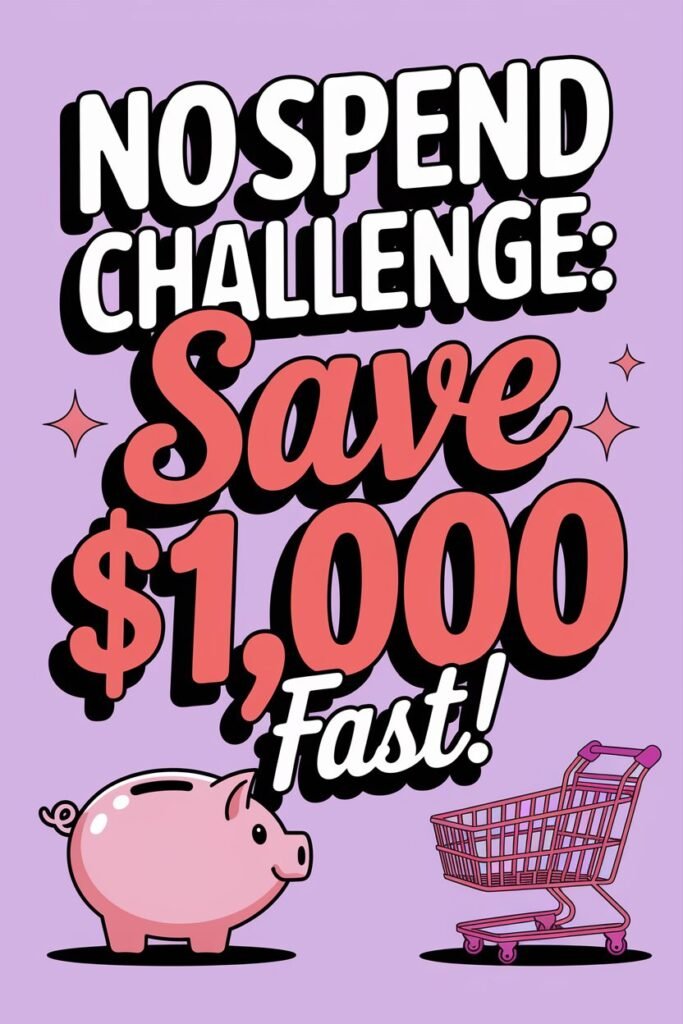Ever thought you could stash away a grand without selling your soul (or your Netflix password)? Challenge accepted! I tried a no-spend challenge recently, and let me tell you, it felt like climbing Everest—except the only thing I conquered was my impulse to shop for discounted throw pillows. Ready to join me? Let’s dive into how you can save $1,000 in 30 days with just a little grit, wit, and maybe a pinch of sarcasm.
What Is the No-Spend Challenge?
The no-spend challenge, or “spending freeze,” means you stop spending on non-essentials for a set period—usually a week or month.
- You still pay bills, groceries, and unavoidable costs.
- You avoid impulse buys, dine-outs, and online shopping sprees.
- You focus on using what you already have.
Sounds simple, right? Yet, once your shopping cart icon mocks you every time you open Instagram, you realize this is a legit test of willpower. FYI: you’ll need more than self-control—you’ll need a plan.

Why You Should Try a No-Spend Challenge
Reboot Your Relationship with Money
Ever glance at your bank statement and think, “Where did all my money go?” This challenge forces you to scrutinize spending habits. You uncover sneaky leaks like subscription stacking or daily latte runs.
Hit a Big Savings Goal—Fast
Saving $1,000 in 30 days might sound like a unicorn-level dream, but it’s doable. Redirecting small daily expenses toward savings accelerates progress. IMO, it beats slapping five-dollar bills under your mattress.
Build Lasting Habits
Once you dismantle impulse spending, you gain confidence. You learn to ask, “Do I really need this?” and maybe even adopt frugal tactics for life.
Setting Clear Goals
Define What Counts
First, clarify what expenses qualify as “no-spend.”
- Essentials: Rent/mortgage, utilities, groceries, meds.
- Non-Essentials: Dining out, subscriptions, hobbies, online orders.
Set your own lines. If you truly need a latte to function, build that into your essentials—but then nix something else!
Track Your Progress
Without tracking, you’re flying blind. Use a simple spreadsheet or an app like Mint or YNAB.
- Daily check-ins help you notice slip-ups immediately.
- Weekly summaries show you how close you are to $1,000.
Pro tip: Color-code days you nail the challenge green, and slip-up days red. That visual boost keeps you honest.
Practical Tips to Save $1,000 in 30 Days
Audit Your Expenses
Grab your last month’s bank statements. Highlight recurring charges and impulse buys.
- Subscriptions: Did you really binge-watch all those services?
- One-offs: That $15 fancy coffee daily adds up to $450 a month!
Cut or pause anything that doesn’t serve you.
Meal Prep & DIY
Eating out can drain $200–$300 a month. Instead:
- Plan meals around sale items.
- Cook in bulk—freeze leftovers for lazy days.
- DIY snacks: Popcorn kernels cost pennies compared to movie theater prices.
You’ll shock yourself with how much you save when you skip the drive-thru
Cancel Subscriptions
Take a hard look at your streaming, gaming, and software services. Pause the ones you barely use.
- Gym membership? Try free YouTube workouts.
- Music streaming? Use ad-supported tiers occasionally.
A quick audit here could free up $100+ instantly.
Entertainment on a Budget
Who says fun costs money?
- Host a potluck game night.
- Explore local parks or free community events.
- Swap books or movies with friends instead of buying new ones.
Your social life doesn’t need to drain your bank account.

Handling Temptations and Staying Motivated
Find Free Alternatives
Crave a shopping fix? Dive into a DIY project using materials you own. Or binge a new podcast instead of scrolling shopping apps.
Accountability Partners
Tell a friend about your challenge.
- Share daily updates.
- Chew out each other for slip-ups (gently!).
- Celebrate milestones together—ice cream (homemade, of course).
A little peer pressure goes a long way.
Tools & Resources
Below are a few apps and hacks that I swear by:
- Mint: Tracks spending automatically.
- YNAB (You Need A Budget): Enforces proactive budgeting.
- PocketGuard: Shows “safe-to-spend” cash in real time.
- Envelope method: Cash-based system—withdraw your budget for the week and once that’s gone, you’re done.
These tools help you stay on top of your progress and smash that $1,000 goal.
What to Do with Your $1,000 Savings
Once you hit that sweet four-figure mark, don’t blow it all on a celebratory shopping spree (tempting, I know). Instead, consider:
- Emergency Fund: Plug that into a high-yield savings account.
- Debt Payoff: Send a lump sum to your highest-interest card.
- Invest: Even $1,000 can kickstart a brokerage account.
Choose whichever aligns with your financial big-picture goals.
Common Pitfalls & How to Avoid Them
- Zero Flexibility: If you never allow yourself any treats, you’ll burn out. Schedule one small “treat” per week that fits your budget.
- Vague Rules: “No non-essential spending” feels fuzzy. Define specifics: no restaurant meals, no clothes, no gadgets.
Guilt Trips: Slip-ups happen. Instead of self-flagellation, dust off, reset, and keep going.

Wrapping Up
So, there you have it—a friendly, no-nonsense plan to save $1,000 in 30 days with our beloved no-spend challenge. You’ll uncover hidden leaks, develop radical self-discipline, and still have fun figuring out free hacks to live your best life. Who knew saving could be this… exhilarating?
Ready to give it a shot? Set your rules, grab a buddy, and let’s make those dollars stack up. And if you slip, just remember: even progress with detours beats staying stuck. Now go forth, conquer your spending habits, and let that $1,000 be your victory badge.
Happy saving!


